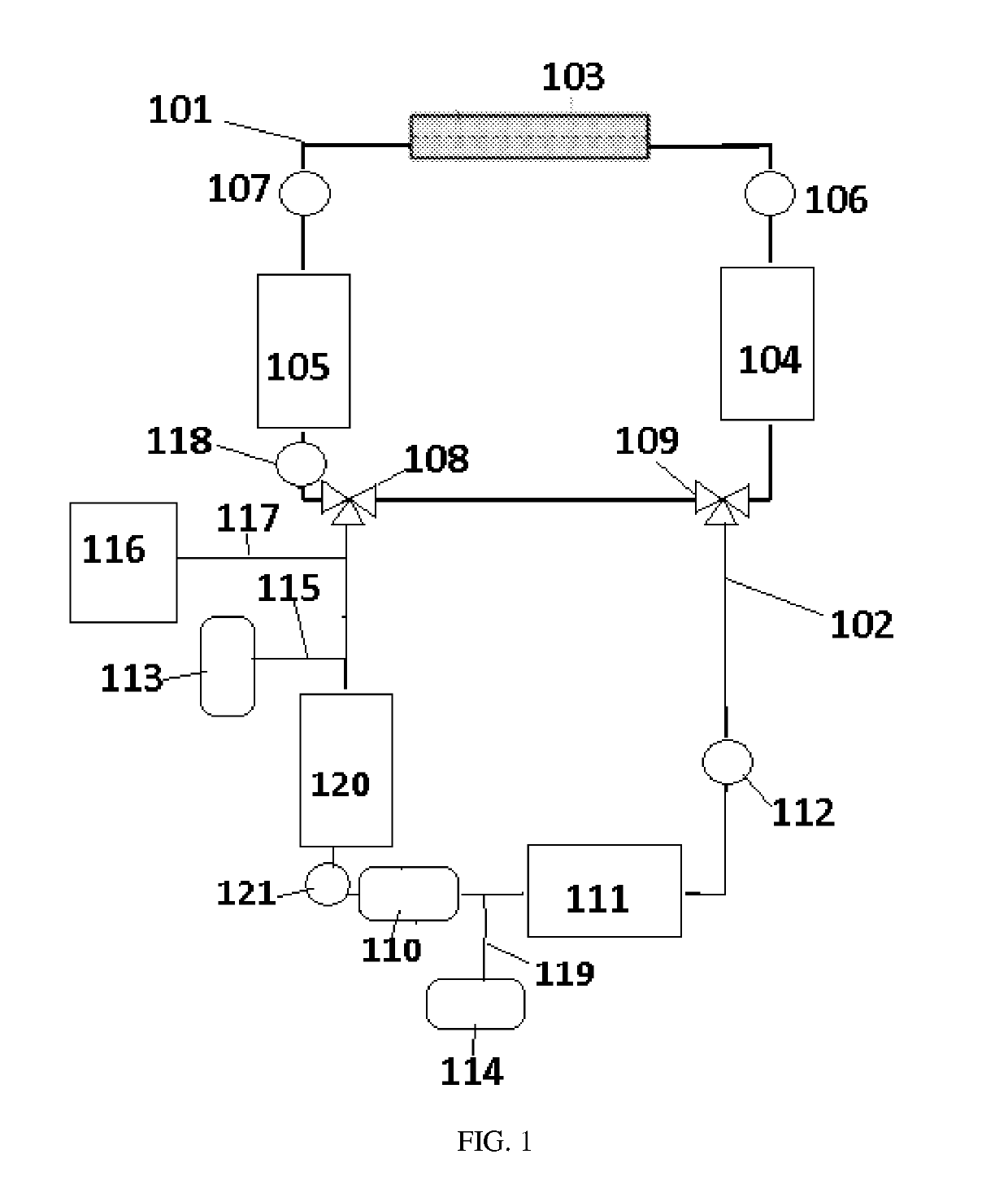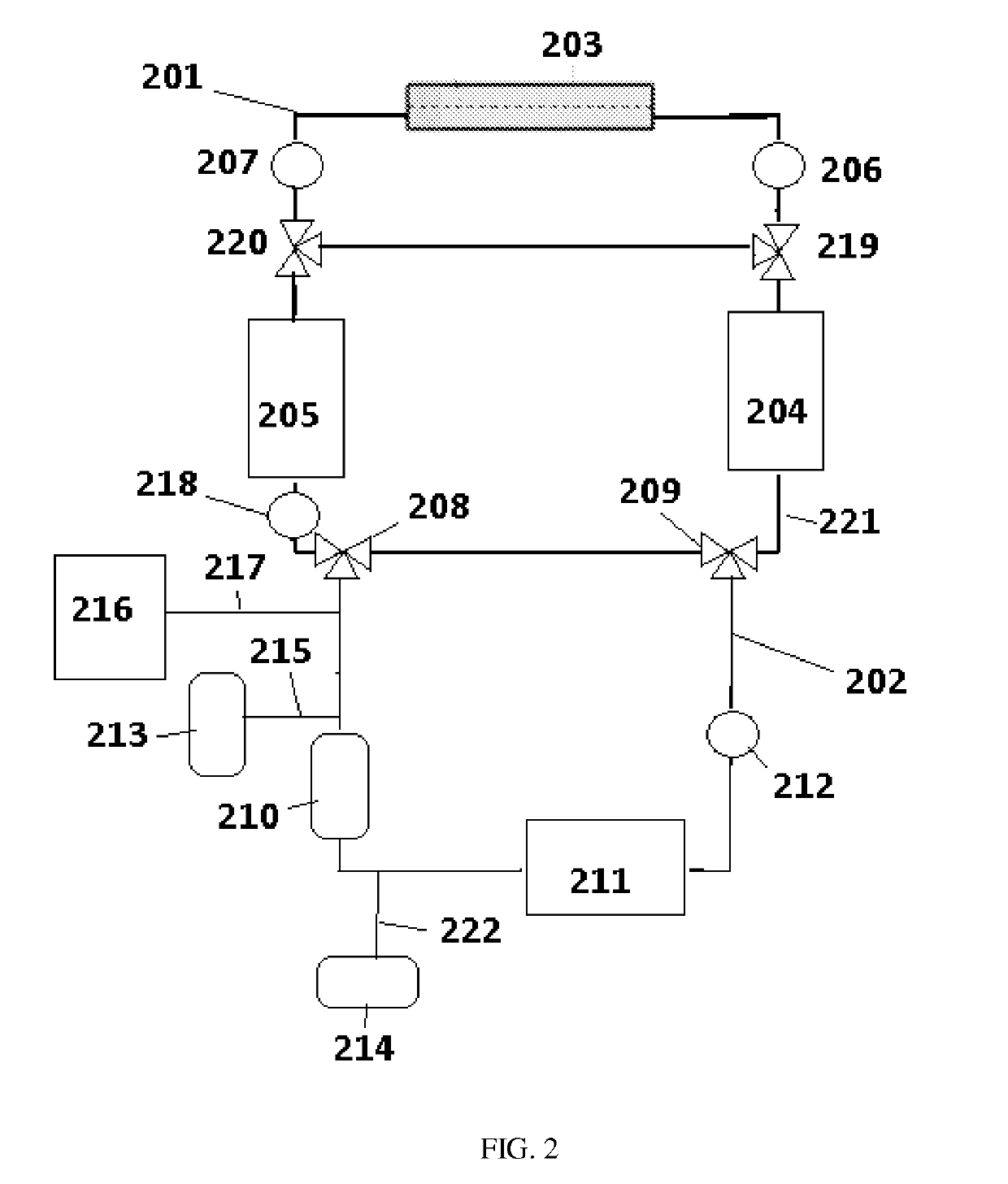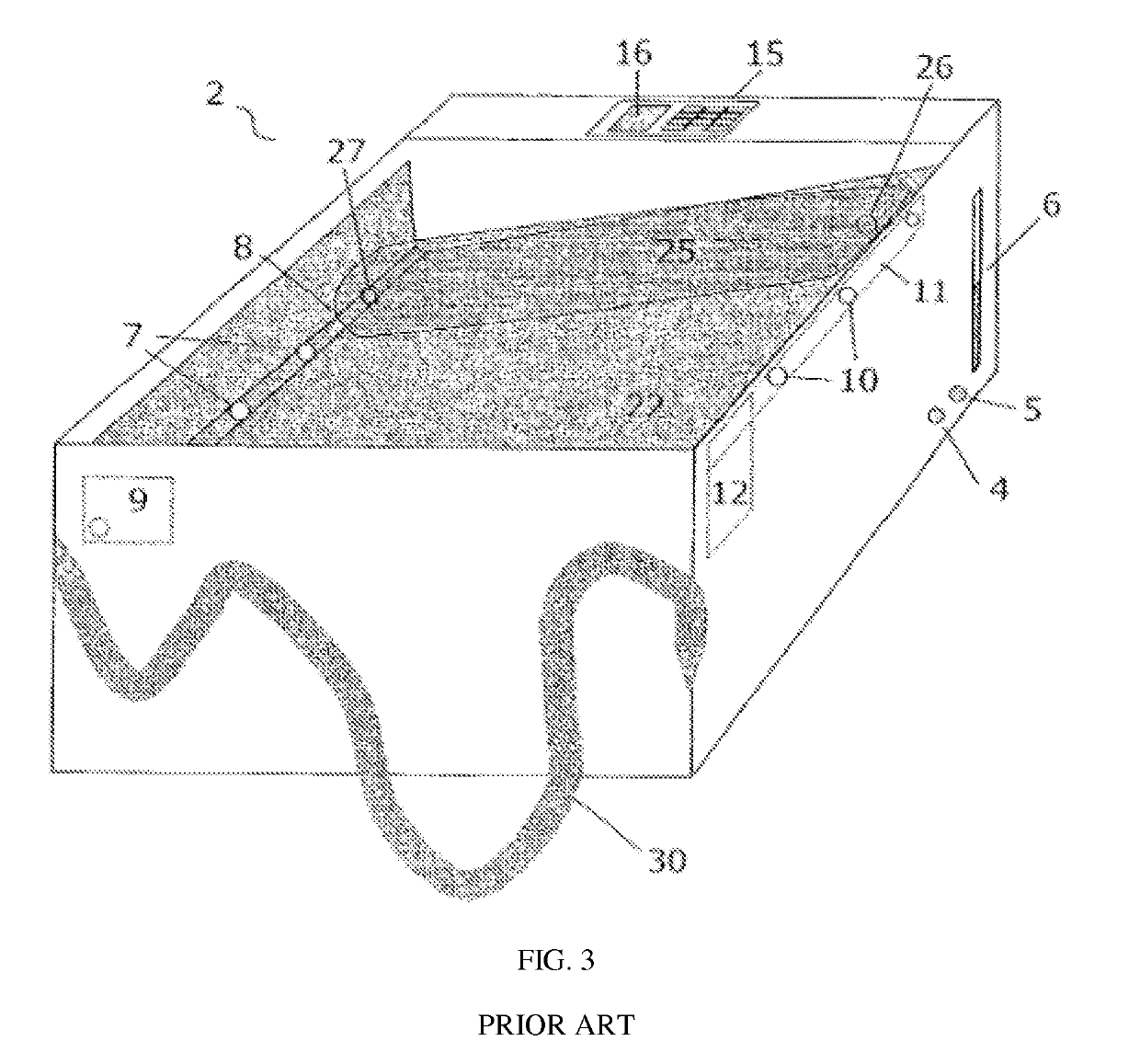Selective sorbent-based regeneration dialysis systems and methods
a dialysis system and sorbent technology, applied in the field of dialysis systems, can solve the problems of increasing the cost of sorbent dialysis, affecting therapy, and high cost of common sorbent materials,
- Summary
- Abstract
- Description
- Claims
- Application Information
AI Technical Summary
Benefits of technology
Problems solved by technology
Method used
Image
Examples
Embodiment Construction
[0046]Unless defined otherwise, all technical and scientific terms used herein generally have the same meaning as commonly understood by one of ordinary skill in the relevant art.
[0047]The articles “a” and “an” are used herein to refer to one or to more than one (i.e., to at least one) of the grammatical object of the article. By way of example, “an element” means one element or more than one element.
[0048]The term “amount of waste solutes” refers to the concentration of one or more waste solutes in a fluid.
[0049]An “analyte sensor” is a sensor capable of determining, either directly or indirectly, the concentration of one or more solutes in a fluid.
[0050]The term “blood urea nitrogen (BUN)” refers to a measurement of the total amount of nitrogen in the blood of a patient that comes from urea. The BUN measurement is generally given in units of mg / dl.
[0051]The term “comprising” includes, but is not limited to, whatever follows the word “comprising.” Use of the term indicates the list...
PUM
 Login to View More
Login to View More Abstract
Description
Claims
Application Information
 Login to View More
Login to View More - R&D
- Intellectual Property
- Life Sciences
- Materials
- Tech Scout
- Unparalleled Data Quality
- Higher Quality Content
- 60% Fewer Hallucinations
Browse by: Latest US Patents, China's latest patents, Technical Efficacy Thesaurus, Application Domain, Technology Topic, Popular Technical Reports.
© 2025 PatSnap. All rights reserved.Legal|Privacy policy|Modern Slavery Act Transparency Statement|Sitemap|About US| Contact US: help@patsnap.com



